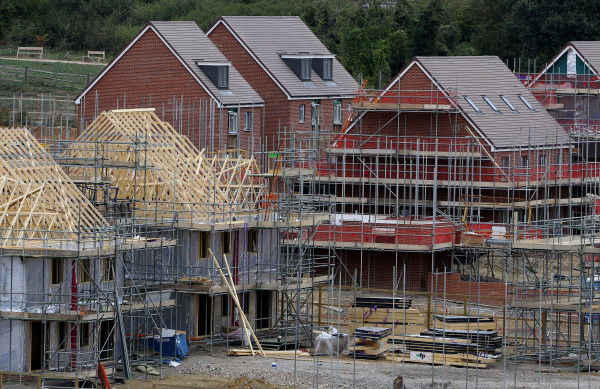

Looking back, the uncertainty we have been dealing with has been greater than we ever expected.
Amid all the Brexit brokering and backstabbing, we have seen the number of buyer enquiries with estate agents fall in 20 months out of the past 22, according to the Royal Institute of Chartered Surveyors survey. Many buyers have simply been sitting on their hands, choosing to hold back on buying a home until the outlook is clearer.
Potential sellers have bunkered down too, with many choosing to extend or renovate in favour of taking on the potential risk of moving to a different property.
It is no wonder then that transaction levels are 8 per cent lower now than in the year before the referendum vote.
Buyer numbers hit hard
First-time buyers buck this trend: their numbers have grown 11 per cent since June 2016, boosted by support from Help to Buy and the bank of mum and dad. But cash transactions have fallen 12 per cent, as these more discretionary buyers sit and wait for greater certainty.
Mortgaged home mover activity has also fallen; mortgage lending regulation has made trading up the ladder much harder.
Buy-to-let investors have been worst hit – their numbers have halved since before the referendum, reflecting a tougher tax regime and stricter lending rules.
With transaction activity slowing, it is perhaps surprising that house prices have continued to grow: 1.9 per cent in the year to November, according to Nationwide. However, if one compares that growth with inflation – 2.2 per cent over the same period – the picture becomes clearer. House prices at a national level look to be marking time.
Regional variations
But the story varies across the country. In Yorkshire and Humberside, for instance, values grew by 5.8 per cent in the year to September. There, mortgage loan to income ratios sit at 3.2 and the average deposit is relatively modest, at £27,000.
Contrast this with London, where affordability is stretched to its absolute limit after registering price growth in excess of 70 per cent over the past 10 years. With an average deposit of £118,000 and loan to income ratios already at 4.0, it is no wonder prices were stagnant in the capital this year.
It is a similar story in the south of England, with price growth rippling out further to the Midlands and North.
The next few months will likely see some of the lowest housing transaction levels since the credit crunch as Brexit angst reaches a crescendo.
The market will have to rely on its three constant friends: death, debt, and divorce.
Looking further ahead, the outlook is mixed. On the one hand, the outcome of Brexit negotiations will provide some much needed certainty to an apprehensive market, whatever that outcome is.
On the other hand, interest rates are likely to rise from today’s historic lows, putting more pressure on affordability.
On balance between these two drivers, we expect to see a bounce in value growth in 2020, but only a limited one.
That bounce will be most pronounced in those areas retaining some affordability wriggle room.
The north-west and Yorkshire & Humber look particularly well placed to benefit. London, on the other hand, will remain constrained regardless of any Brexit outcome, simply because affordability there is so stretched, meaning five-year house price growth in the capital and its commuter belt will be in single digit territory.
The balance of improving sentiment and tightening affordability means we are unlikely to see any sharp resurgence in transaction activity.
We predict that transaction levels in five years’ time will be roughly the same as they are now, albeit with even less activity from buy-to-let investors as tax relief on their mortgage interest payments recedes further.
This will put upwards pressure on rents, particularly in supply-constrained London, where average rents are expected to rise faster than incomes.
In a market where home ownership looks set to remain out of reach for many aspiring owners, we need policies that secure institutional investment in the build-to-rent sector, to provide quality rental homes, greater security of tenure and to help rebalance supply and demand.
Lawrence Bowles is a research analyst at Savills



